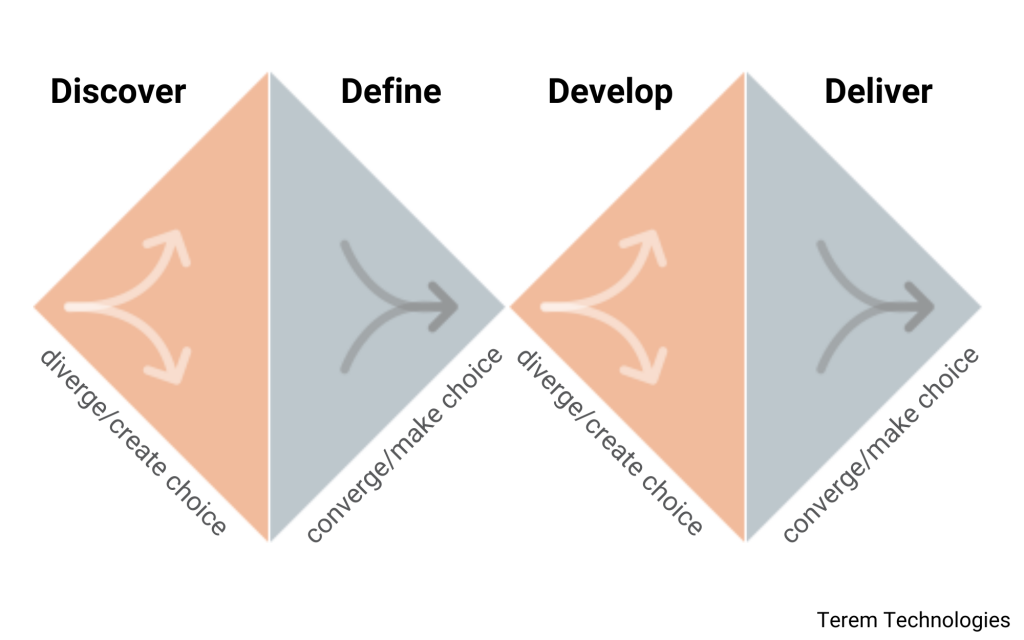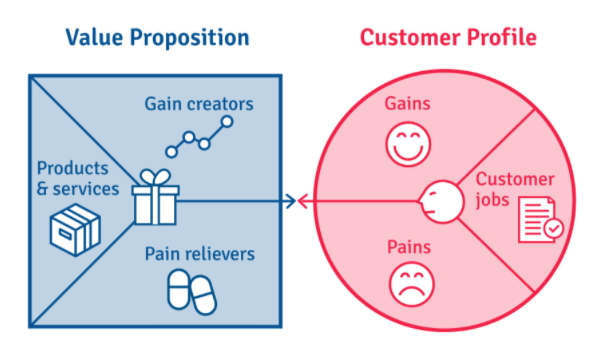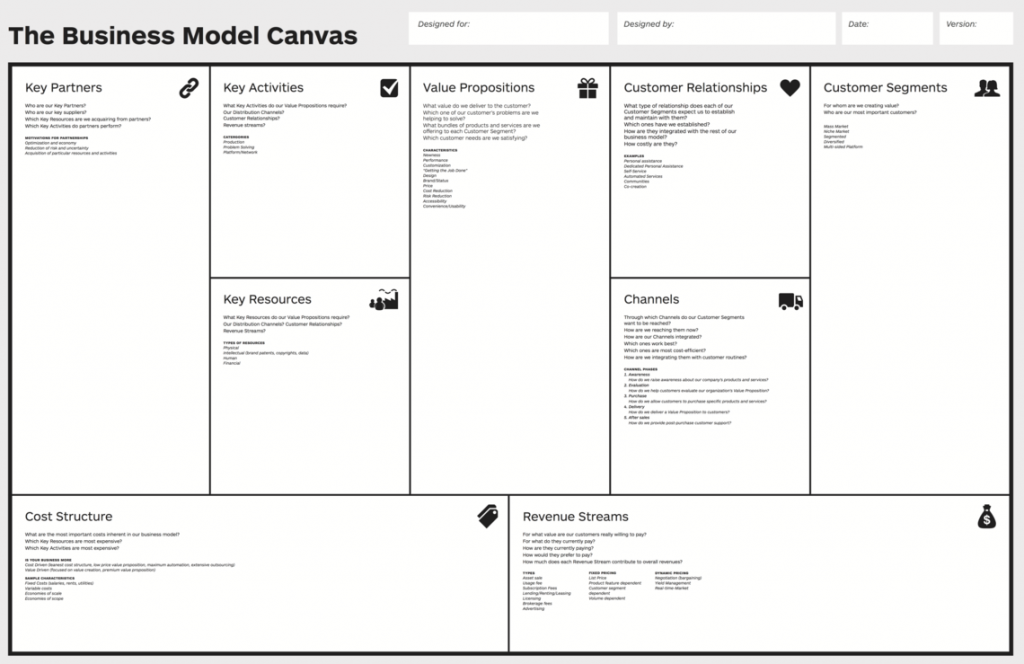
A regular challenge for product and venture teams operating in large companies is uplifting the skills of the people raising ideas so that they are more mature when they arrive. More mature ideas hitting the top of the product team’s funnel means better results for the business.
This challenge usually starts out with an announcement from an executive that there is now a team responsible for taking innovative ideas and converting them into new products and new ventures. Everyone in the organisation gets excited, and ideas fly in from everywhere.
The team gets overwhelmed. It’s challenging assessing every idea in detail. Some ideas are no more than a few lines in an email. Others might be live “products” that business units have lovingly invested in and developed in stealth mode to meet their own needs. Many of the ideas just aren’t mature enough to work on and require more research.
The team is forced to push back – they also have their own strategic set of ideas they’ve been tasked with progressing. They need to manage their time.
The people that submitted ideas get upset or become disengaged. The business doesn’t want to miss a good opportunity. The product team gets put under pressure to take the ideas on, so discovery work gets pushed back onto people in order to get through the volume of work.
People across the business don’t feel heard. They think their ideas are great (don’t we all think our own ideas are great?). They feel like the product or venture team isn’t doing its work. They stop wanting to collaborate.
“We gave an outstanding idea to the Lab, but they just told us our idea was no good and we had to go do more work. They then proposed they bill us for their time to work on the idea, isn’t that their job?!?” – actual quote from General Manager.
These problems – people not feeling heard, lack of team capacity for researching new ideas, the need to efficiently and effectively assess ideas at scale – can be partly solved by uplifting the Discovery skills of non-product people.
The intention here isn’t to turn everyone into a product manager. The intention is to give someone with an idea, the tools and skills needed to do a good enough discovery around a new idea. With extra emphasis on good enough, not perfect. Enough that the product team has something they can work with and assess against everything else in the pipeline and portfolio.
This is a win for everyone. The product team is able to make better use of the amazing insights people with ideas have and scale this more effectively. People with ideas know what is expected of them and why it’s expected, which means better ideas and less disappointment or frustration.
This guide to uplifting the Discovery skills of non-product people covers the knowledge that people need to have and then the skills they will need to put that knowledge into action.
Discovery Knowledge for Non-product People
Before someone can effectively run a Discovery for a new idea, they need some background understanding on these key concepts (ideally in order):
- How ideas become a reality
- Why start with Discovery?
- Why focus on the customer and their problem first?
- How discovery usually evolves (what to expect)
- Key concepts to know
- How a decision will be made on whether to proceed or not
How Ideas Become a Reality
You need to understand the context a new idea exists in so that you can better help that idea form. For the purposes of this guide, we’re going to avoid complex process diagrams with decision points and flow charts. Instead, the popular double diamond framework provides us with a simple illustration of how an idea best progresses from concept to a real, working product or venture.
Double Diamond

The Double Diamond is a process developed by the Design Council of the UK. It combines divergent thinking (exploring an issue widely) and convergent thinking to understand the problem, use these insights to define a solution, develop a solution then deliver a solution (put it into action).
Most organisations use some variation of this to work ideas from a few lines on a piece of paper to something being used by customers and earning revenue (or results).
Most of the time a new idea will need multiple iterations around this loop. For various reasons, many organisations can struggle with iterations (e.g. fear of failure, budget or governance process).
When someone is submitting ideas to a product or venture team, they’re coming in at the Discover step. You need to help them understand the problem in order to get to the next step. Most people unfamiliar with these techniques jump straight to develop mode (“I already know what we need to do, can you just build it?”).
Why Start with Discovery?
You need to start with a Discovery because this is the process for understanding the problem and the customer. It’s a way of explicitly stating your assumptions. This is the foundation that any successful venture, product or idea is built on.
If you find yourself saying “I understand the customer”, “I already understand the problem” or “I already know what we need” then, I can tell you now you are wrong. This comes from hard-won, expensive experience that I’ve learnt too often. The people and companies with the best understanding of their customer always say they don’t understand their customers enough, those that lack it always says they know what their customers need.
You can find a more detailed explanation of why Discovery is the essential foundation for any product or venture here. Including a list of the benefits, risks for skipping it and false reasons people give for why it isn’t needed.
Why Focus on The Customer and Their Problem First?
The reason why you focus on the customer (or citizen!) and their problem first is because, at the end of the day, this is where a product succeeds or fails. You need to solve a problem.
As a non-product person, helping your product or venture team understand the customer problem is where you can add an immense amount of value, especially because you are probably closer to the customer than they are.
The focus on this, really getting this right, is far more important in the early stages of the process than market size, solutions and, even business models. If you understand the problem well, everything else can fall into place and be designed around it. If you get it wrong, then you’ll forever be trying to make up for it, often in an unnecessarily expensive way.
What to Expect From Discovery
When you are doing a discovery, you will likely start with the idea that you think is amazing. Then you’ll begin explicitly stating your assumptions and interviewing customers. You are going to start learning things about the problem, about your assumptions and your customers that you had not considered.
If you’re doing it right, you will almost certainly change direction. You’ll either completely change your thinking, or you’ll make adjustments.
Follow the problem and your research, not your biases and initial assumptions.
You’ll come to the end of your discovery activities and be faced with an end of Discovery decision. You’ll need to consider this before you go ahead and take it to the group that decides whether to proceed or not (it’s usually some kind of committee or executive group, but in smaller companies, it might be an individual).
Key Concepts to Know
There are a few concepts to consider when working through a Discovery. The list below is a refined list selected for non-product people working through the process of getting their idea up.
- Recognise the realities of large companies:
- New ideas carry high uncertainty that large companies aren’t used to. Be aware of this and how to deal with it, don’t get caught in a vicious cycle of trying to provide certainty where it isn’t possible.
- There are corporate forces that work against new products and ventures. Be aware of them, address them head-on.
- Corporations get distracted by market size. It’s not always the right way to think early on with an idea.
- Understand how product development is approached beyond discovery – start with the principles of a product-led approach.
- Focus on customers at the start of the Technology Adoption Lifecycle: Early on, you want and need to focus on customers that will be innovators. The ones that will be ok with early versions of your product, early versions that have less features because they feel the pain strongly and are willing to take some risk. Only once you are succeeding with them will you consider expanding the product to meet the needs of later adopters.
How a Decision to Proceed Will be Made
Finally, you want to have some understanding of how a decision will be made about whether your idea proceeds to whatever the next step in your organisation’s process is.
Most companies will have a framework or some criteria. Get this ahead of time.
Then make sure your pitch for proceeding focuses on why it’s worth proceeding to the next stage rather than why you need to Go-to-Market now. It’s easy to get diverted by solutions, market sizing and trends, but it’s usually so early in the evolution of the idea that the idea is easily rejected because it carries too many assumptions or risks.
Instead, focus on what you have with your newly gained understanding of the customer and the problem. Pitch to address the assumptions you have and outline possible solutions to the problem.
When it comes to the pitch itself, after we’ve debated the idea, I personally find it beneficial to focus everyone on four key questions:
- Do we want to be in this space?
- Is this a good enough idea in the space?
- What’s the single biggest assumption we need to address?
- Does this proposed next step address this assumption?
Discovery Tools for Non-product People
The key tools that a non-product person needs to run a good enough Discovery are:
- Customer Value Proposition (CVP) Canvas
- Jobs-to-be-Done (JTBD)
- Business Model Canvas
Other tools like wireframing or prototyping tools were considered but have explicitly been omitted. These tools send people inexperienced with discovery too far down the solution path and become distractions from them focusing on the problem and the customer.
Tools for market sizing and complex financial analysis have also been explicitly omitted. These activities distract from focusing on real customer problems.
The tools that have been listed really focus the mind on the customer, the customer’s problem, the commercial opportunity and the viability of that opportunity. In the early stages, rough answers and hypotheses are acceptable: perfect is the enemy of done and progress.
Below is a brief overview of each tool.
Customer Value Proposition (CVP) Canvas

Jobs-to-be-Done

Learn how to master Jobs-to-be-Done to understand your customer in this article.
Business Model Canvas

Discovery Skills for Non-product People
Now that people are armed with the background knowledge, you can work through the foundational skills and tools for doing a discovery:
- How to run early customer interviews:
- How to use landing page experiments to quickly understand customer behaviour
- Surveys to validate Jobs-to-be-Done
Closing Thoughts & Clarifications
There is a lot of knowledge, skills and tools that have been explicitly avoided, anything to do with solutions, market sizing and financials. The reason is that, more often than not, these are where non-product people naturally jump towards, and the key to running discovery effectively, at-scale with non-product folks is to get them focused on the customer and the problem.
But, uplifting the skills of the people raising ideas isn’t just about the efficiency of the product or venture team tasked with qualifying them out or progressing them.
When you are a product or venture team operating at scale, you have no shortage of ideas and opportunities to assess.

Scott Middleton
CEO & Founder
Scott has been involved in the launch and growth of 61+ products and has published over 120 articles and videos that have been viewed over 120,000 times. Terem’s product development and strategy arm, builds and takes clients tech products to market, while the joint venture arm focuses on building tech spinouts in partnership with market leaders.
Twitter: @scottmiddleton
LinkedIn: linkedin.com/in/scottmiddleton